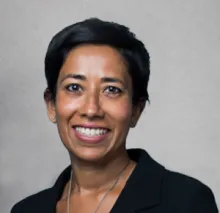Fraser Moore: Inquest finds British Transport Police actions contributed to death at London Bridge Station
A critical inquest has concluded into the death of a young man, who died on a live rail at London Bridge train station on 25 March 2020, after being unjustifiably handcuffed and wrongfully arrested by British Transport Police (BTP) officers.
Fraser Moore, 25, had been in mental health crisis on a train and was being supported by two off duty Met officers who had expected he would be taken to hospital. Instead he was arrested by BTP, ran off and died. The inquest concluded the actions and inactions of BTP contributed to his death.
Fraser was a Canadian man travelling to London to pursue his entrepreneurial endeavours in the music production industry. Fraser’s family describe him as a creative spirit with an adventurous nature, and a contagious laugh. He was a much-loved brother, son and friend.
In the early hours of 25 March 2020 at 5.17am, days after the country went into lockdown, Fraser boarded a train. He was loud and animated and had no top on, despite the cold weather, but was wearing three pairs of trousers.
Fraser came to the attention of two off duty Metropolitan police sergeants who were travelling on the same train. One of them spent over 20 minutes talking to him, expecting help from the BTP once the train came into London Bridge. He was acting and speaking bizarrely, and this was recorded by one of the officers.
One of the police sergeants gave evidence to the inquest. She said that, given his behaviour, she was expecting Fraser to be taken to hospital by BTP officers, under mental health detention powers (section 136 of the Mental Health Act).
The jury heard that Fraser had agreed to go to hospital and was fully compliant with the officers. However, when a BTP sergeant boarded at London Bridge he instead handcuffed Fraser immediately, without asking either of the off duty officers a single question.
Another BTP officer, a police constable, then decided to arrest Fraser. This was again without seeking any information at all from either off-duty officers, both of whom were present.
The BTP officer relied on what was recorded on an inaccurate and incomplete information, from the BTP control works log. These incorrectly stated that an offence of indecent exposure had occurred. This had come from a Met police 999 call operator.
The BTP officer did not record the necessity of the arrest at the time. Seeing Fraser’s agitation, the off duty Met police officer asked the BTP officers to give her some space as they had a good rapport. As the BTP officers left the train, Fraser was able to run off with his hands still cuffed to the front.
Despite being responsible for his detention, the BTP officers had failed to cover of one of the carriage exits. Fraser was chased by a BTP officer down the platform. He then jumped onto the live tracks, fell onto the ground where he was electrocuted. He was pronounced dead by medics at 6.16.am.
Due to the unclear communication from the BTP officers, it took around 15 minutes for Network Rail to turn off the power on the tracks. However, the jury heard medical evidence that he would have died very quickly.
The inquest jury concluded that Fraser’s death was caused by electrocution and contact with a live rail. The jury also highlighted the following issues which contributed to Fraser’s death:
-
Inappropriate handcuffing, unnecessary arrest, inadequate supervision of his arrest, and failing to prevent his escape.
-
The ‘National Decision Making Model’ [a framework which police use to make decisions] which stipulates an officer must first gather enough information before making any decision, including handcuffing and arrests, not being followed. This was despite the presence of Met officers who were able to provide this information.
-
Inadequate supervision of Fraser, as BTP officers left the carriage and lost visual contact.
The jury noted that no aggression was displayed by Fraser prior to being handcuffed, as is clear from the CCTV. They also highlighted that BTP do not provide specific training on assuming a covering position at doors of rail carriages to prevent escape.
The coroner is considering making reports to prevent future deaths on a number of issues, including to Network Rail on the control room access to the CCTV, as well as the coverage of the cameras at London Bridge. He is also considering evidence around the Met police 999 call operator recording inaccurate and misleading information.
Maya Sikand KC represented the family with INQUEST Lawyers Group members and Jade Brown of Taylor Rose MW solicitors.








